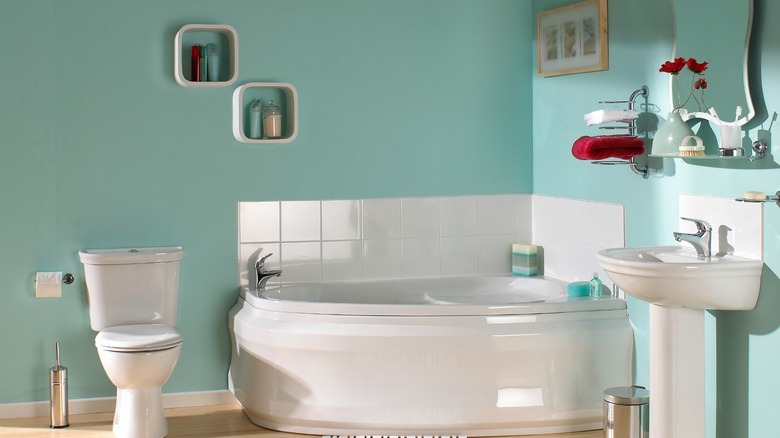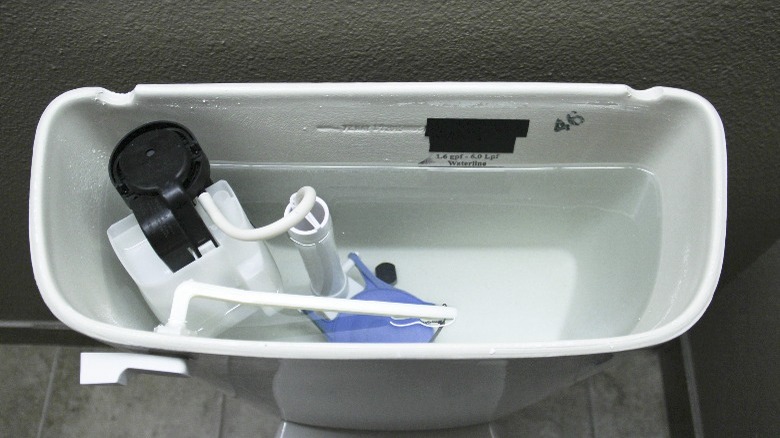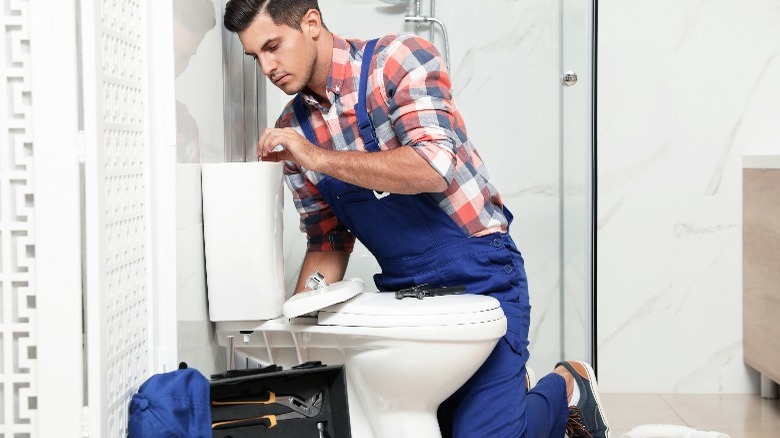Gravity Flush Toilets: Everything You Need To Know
Although the name might sound foreign, a gravity flush toilet is the same old invention we've known and relied on for years. But just in case you aren't aware of how it works, we've got the lowdown right here. We'll explain all the details of what happens — from the moment you pull the handle to filling up for the next flush. Plus we'll go over any potential problems that could arise if something goes wrong. After all, we spend time on this seat in our homes every single day of our lives! It's privy to our dirtiest secrets, and witness to our most embarrassing personal failures (ahem).
All kidding aside, the toilet is indeed an amazing invention that goes back indefinitely, but the first flushing toilet was patented in 1775 by a Scottish inventor named Alexander Cumming. He is credited with designing a feature of the toilet still easily recognizable today — the S-shaped pipe located beneath the toilet bowl. This uses water to form a seal so that sewer gasses cannot escape into the room with you and cause a smelly situation. With that, let's move on to everything else you ever wanted to know about the gravity flush toilet.
How it works
Gravity flush toilets work by, yep — you guessed it — gravity. The way it works is quite innovative, yet extremely simple. The handle is connected to a chain inside the tank, so that when you pull it, it pulls up on the flapper valve cover at the bottom of the tank. The valve then releases the water from the tank into the bowl. The water flows into the bowl due to gravity, and as it falls it creates a siphon effect in the trapway near the base of the toilet. The circular motion and gravitational force move the waste through the S-shaped pipes below and into the sewer system or septic tank.
One of the most amazing parts of this invention is that it needs no power or electricity to work. The gravity flush toilet is quite efficient, and as such, really hasn't changed much over the last century. Because there are a limited number of moving parts, there are a limited number of things that can break.
Potential problems
Let's start with the flush mechanism. A couple of things could potentially malfunction and cause a minor problem. First, the nut on the other side of the handle could work loose and cause the handle to jiggle ineffectively. Incidentally, in this case try a little clear nail polish on the threads before tightening the nut. Additionally, the chain could come loose, either at the handle or at the valve on the bottom of the tank. If this happens the mechanism won't flush, so you'll need to hook it back up by hand. The chain will need the perfect length so that it lifts the valve cover high enough, but not so long that it gets stuck underneath it and causes the toilet to keep running.
The flapper valve itself can become worn or damaged as well, which causes the same problem of perpetual running water because the tank can't refill properly. When the water drains from the tank, a float device activates a fill valve to refill the tank after the flapper valve cover is back in place. The fill valve also sends a stream of water into an overflow tube, which also fills the bowl up. If the refill tube slips off of the overflow tube, no water will fill the toilet bowl. Other than that, the cost to purchase one is going to be between $100 and $200 on average.


